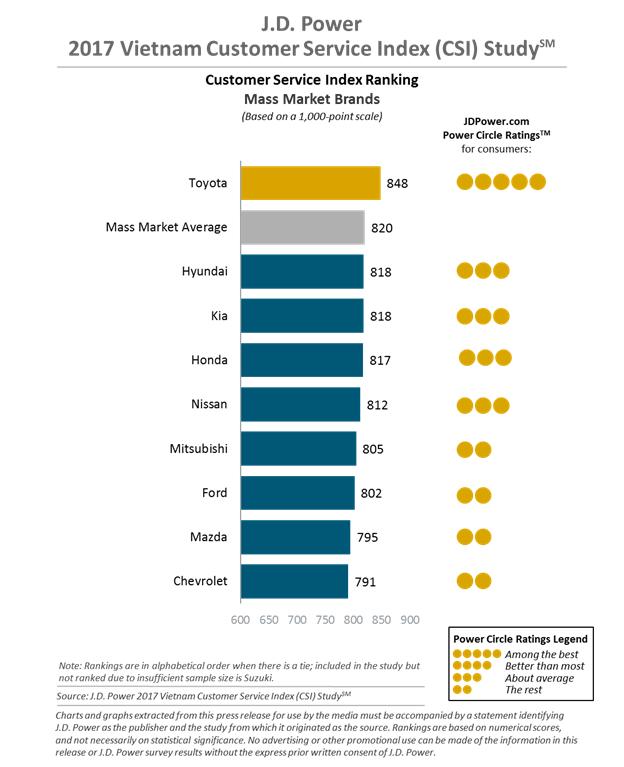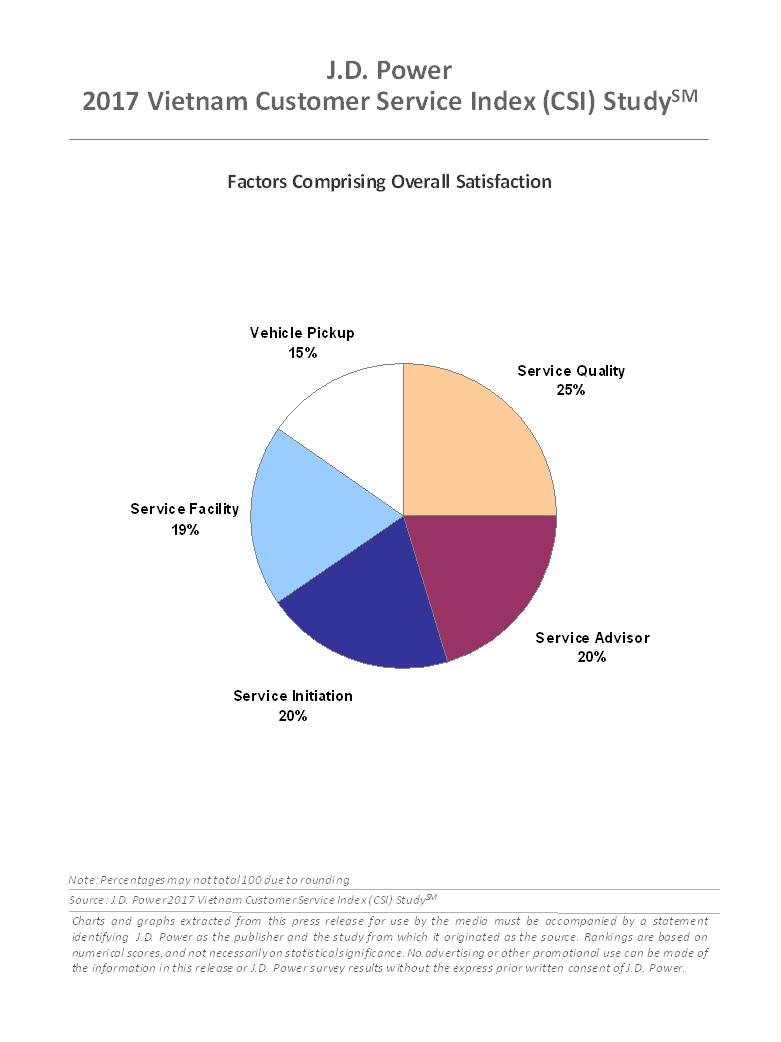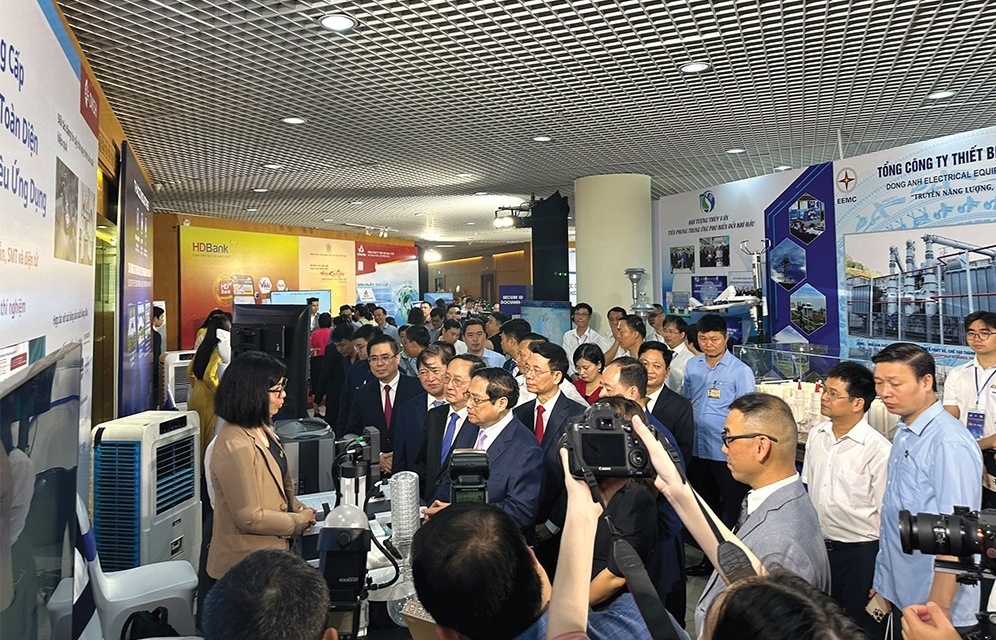J.D. Power study shows declining implementation of service standards impacts customer service
 |
As the number of after-sales service customers making an appointment (66 per cent) continues to rise, the gap in satisfaction with walk-in customers increases significantly (9 points in 2016 vs. 43 points in 2017, on a 1,000-point scale). Although the number of service standards received by customers with appointments remains stable year-over-year, the service level for walk-in customers has decreased notably in this year’s study, as only 31 per cent of these customers indicate having received 21 or 22 standards (out of 22) in 2017, down from the 65 per cent in 2016.
Coincidentally, customer sensitivity to receipt of these service standards has risen, as the difference in overall service satisfaction between low and high standard implementation increased from 90 points in 2016 to 139 points in 2017.
“Authorised service centres are increasingly encouraging customers to schedule appointments and are making strides to ensure they receive a high standard of service,” said Siros Satrabhaya, country manager at J.D. Power. “However, the downside is that not all walk-in customers are receiving some essential quality standards, which can subsequently have a negative effect on their overall experience. This, in turn, may lead to higher service defection rates—even during the warranty period—and, therefore, a potential loss of service revenue. It is crucial that dealers strive to offer a consistent level of service to customers with appointments and walk-in customers alike. In order to boost the satisfaction of walk-in customers, dealers must focus on a number of key areas, such as washing and vacuuming the vehicle after service and making follow-up calls.”
The study finds the number of walk-in customers who say their vehicle was returned both washed and vacuumed has decreased by 25 percentage points from 2016 (48 per cent vs. 73 per cent, respectively). In comparison, 78 per cent of customers with appointments say the same. Similarly, while 92 per cent of these customers indicate they were contacted after service, only 57 per cent of walk-in customers indicate the same.
Following are additional key findings of the study:
- Listening to customer requests and paying attention to details are critical: The longer service advisors listen to customer requests before servicing their vehicle, the better. Overall satisfaction is higher among customers who indicate their service advisor paid close attention to details (835), compared with those who did not indicate the same (751). Nevertheless, only 79 per cent of customers say this was the case in 2017, compared with 93 per cent in 2016.
- Discussion after service best handled by service advisors: Satisfaction is higher among customers whose service advisor helped locate and deliver the vehicle (842), compared with those who spoke with someone else (799) or who did not speak to anyone (748).
- Following up post-service is vital: Post-service follow-up calls are important not only to boost satisfaction, but also to detect and fix problems with the vehicle after customers have left the service centre. Nearly three in 10 customers who receive a follow-up call indicate there is a problem which dealerships are able to correct 99 per cent of the time.
- Defection to non-authorised service facilities increases: The number of customers who say they have serviced their vehicle at a non-authorised facility has increased by 34 percentage points in 2017 compared with 2016 (43 per cent vs. 9 per cent, respectively.) Additionally, although brand recommendations and repurchase intentions are increasing slightly, the number of customers who say they “definitely would” revisit their authorised service dealer for warranty service has decreased by 9 percentage points (56 per cent in 2017 vs. 65 per cent in 2016).
 |
Study Rankings
Among the nine brands ranked in the study, Toyotaranks highest for the second consecutive year, with a CSI score of 848 points. Toyota performs particularly well in all five CSI factors and is the only brand outperforming the mass market average.
The 2017 Vietnam Customer Service Index (CSI) Study measures overall satisfaction among vehicle owners who visited an authorised dealer/service centre for maintenance or repair work during the first 12 to 36 months of ownership.
This study is based on responses from 1,681 new-vehicle owners who purchased their vehicle between October 2014 and December 2016 and took their vehicle for service to an authorised dealer or service centre between October 2016 and December 2017. The study was fielded online between October and December 2017.
Now in its ninth year, the study measures new-vehicle owner satisfaction with the after-sales service experience by examining dealership performance in five factors (in order of importance): service quality (25 per cent); service advisory (20 per cent); service initiation (20 per cent); service facility (19 per cent); and vehicle pickup (15 per cent).
What the stars mean:
★ Poor ★ ★ Promising ★★★ Good ★★★★ Very good ★★★★★ Exceptional
Latest News
More News
- Euro companies forge innovative pathways in 5G (May 23, 2024 | 14:00)
- ESG funding for sustainable growth (May 23, 2024 | 11:01)
- Hospitals ready for procurement reform (May 22, 2024 | 18:00)
- Partnership key to improving healthcare in Vietnam (May 22, 2024 | 16:55)
- RIS.ER 24 event taking place at Sheraton Hanoi Hotel on May 23 (May 22, 2024 | 15:32)
- Indian tech legend inspires Vietnamese IT industry (May 22, 2024 | 12:02)
- Premium foreign brands expand presence in Vietnamese market (May 22, 2024 | 11:18)
- COPD treatment is of utmost importance (May 22, 2024 | 09:31)
- SCIC plans to sell stakes in over 30 enterprises (May 21, 2024 | 19:45)
- AstraZeneca to build 1.5 billion USD cancer drug facility in Singapore (May 21, 2024 | 16:28)

















 Mobile Version
Mobile Version